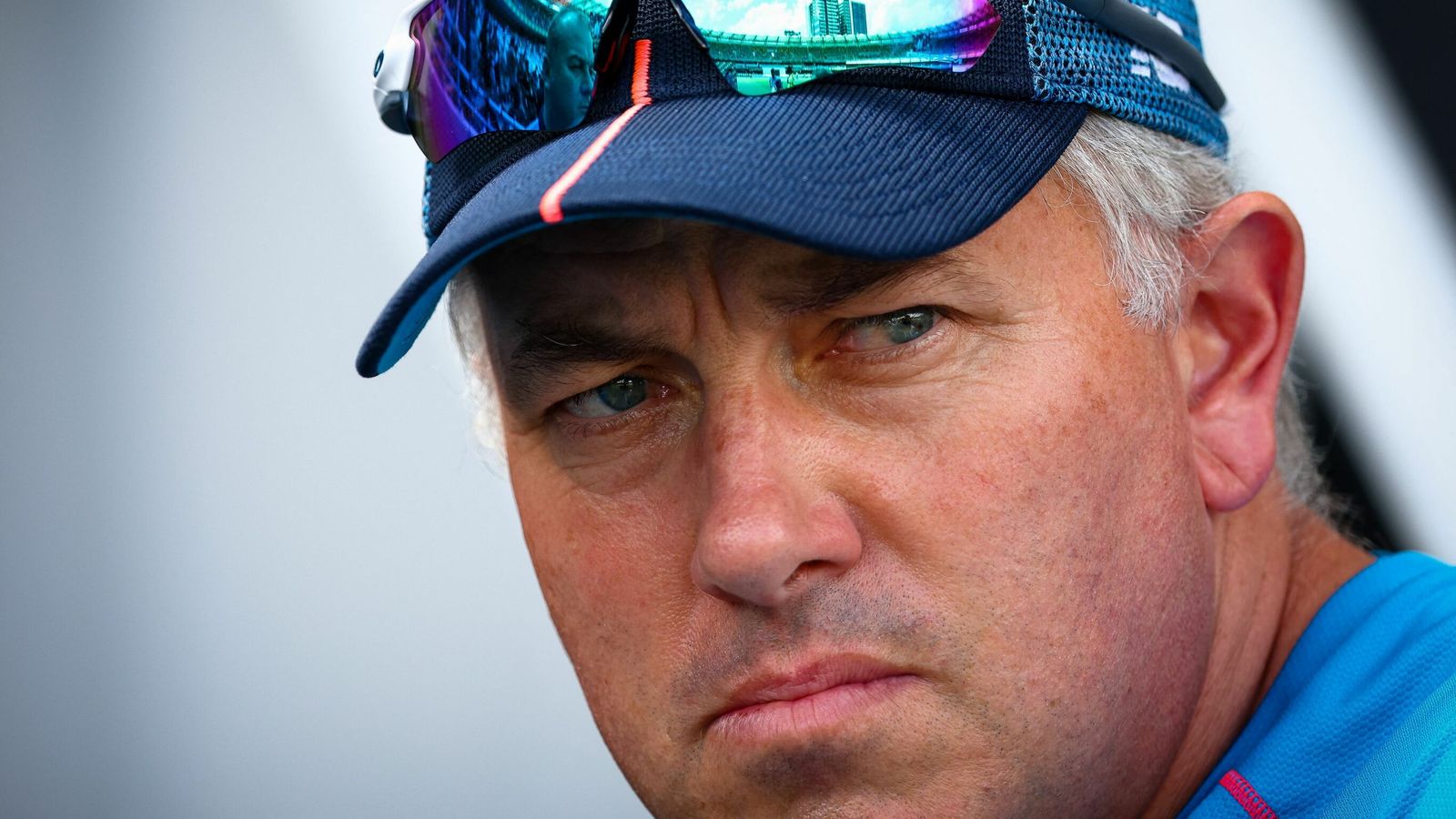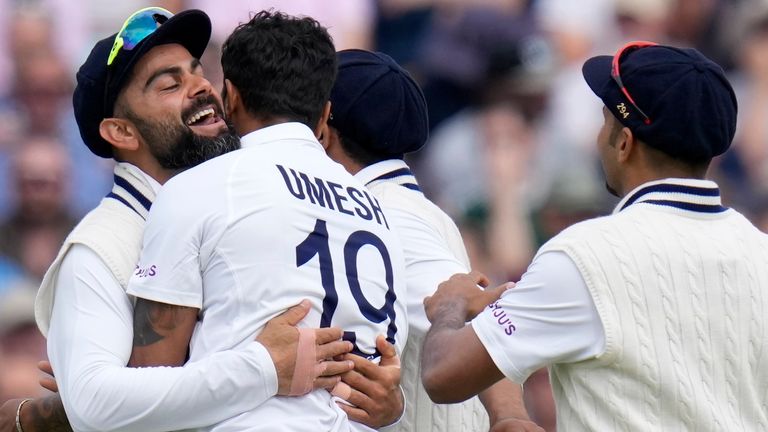Chris Silverwood: Where did it go wrong? We look at his tenure as England head coach | Cricket News
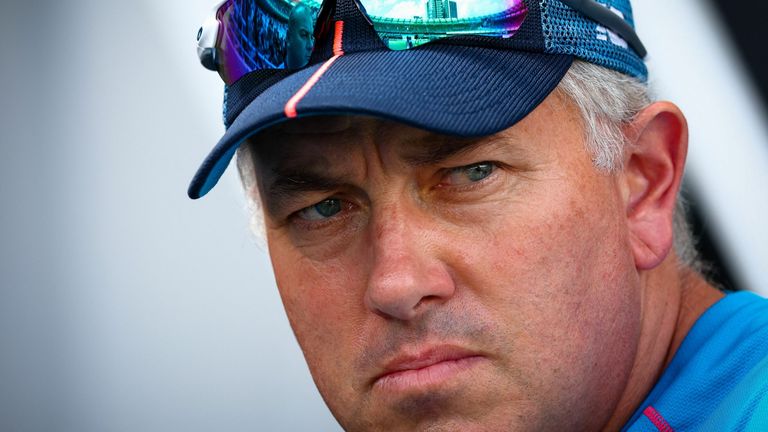
Chris Silverwood was appointed as England head coach in October 2019
After Chris Silverwood’s departure as England head coach, Sam Drury looks at the Yorkshireman’s tenure, which started with some optimism but ended with him leaving the Test side very much as he found it…
Silverwood took over as head coach with English cricket on a high after iconic moment had followed iconic moment during a glorious summer.
England had won the World Cup by the barest of all margins, Jofra Archer and Steve Smith memorably did battle at Lord’s, Stuart Broad got David Warner out every other ball and Ben Stokes played perhaps the greatest Ashes innings of all-time at Headingley.
But while England were on top of the world in white-ball cricket, even Stokes’ heroics were not enough for Joe Root’s side to regain the urn as an entertaining series finished all-square.
As the limited-overs side thrived, the Test team remained inconsistent with a fragile batting line-up and a bowling attack which struggled to replicate its potency on English soil, away from home.
In October 2019, Silverwood was promoted from his position as bowling coach to replace Trevor Bayliss and spoke about England’s “enormous potential for growth” and, after winning the County Championship in his time in charge of Essex, he was keen to improve the side’s red-ball fortunes.
The grand plan was to score big first-innings runs and build pressure from there. Hardly revolutionary but after the batting struggles of recent years, it was always going to be the focus for improvement.
With an emphasis on how many rather than how quickly, Dom Sibley was rewarded for his mountain of runs in the County Championship with a place in the squad to face New Zealand, bringing an end to the short-lived experiment with white-ball star Jason Roy at the top of the order in a move which highlighted the new approach.
With no World Test Championship points at stake, the two-match series against the Black Caps was billed as a chance to look at the fringe players but, while there were debuts for Sibley and Zak Crawley, it was essentially England’s best available side that fell to a 1-0 defeat.
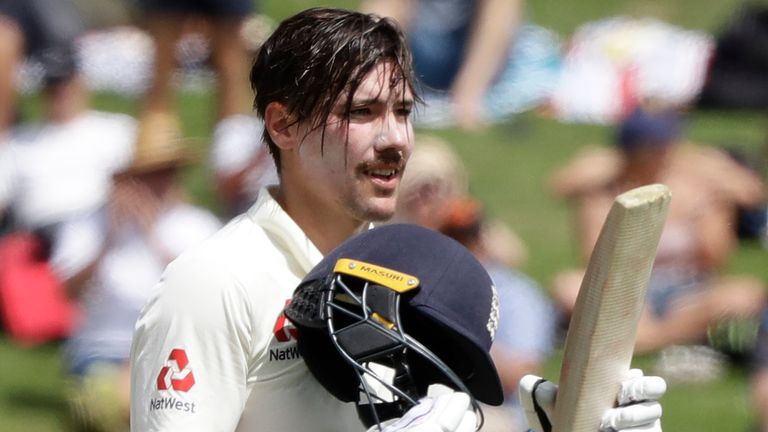
England opener Rory Burns celebrates his hundred in Hamilton during the tour of New Zealand in late 2019
The 476 they racked up in the second Test had all the aspects that Silverwood was after in a first innings, a measured century for Rory Burns and a double for Root, although it was aided by the flattest of surfaces in Hamilton as the game ended in a bore draw.
Green shoots of optimism in South Africa
It was in South Africa that it really felt as though the Silverwood era had begun. Preparations were hampered by a mystery illness which swept through the camp, with Chris Woakes among the players who have since questioned whether it might have been an early outbreak of coronavirus, at a time when Covid-19 would have meant nothing to most people across the world.
South Africa themselves came into the series at a low ebb but ended a run of five straight Test defeats with victory at Centurion. England were bowled out for under 200 in the first innings and collapsed to lose six wickets for 46 runs in their second. A rather unwanted trademark of this side in recent years.
The demise of English red-ball cricket was once again top of the agenda. One month and three Test matches later, though, the talk was of a bright new dawn.
Stokes sealed a dramatic victory in Cape Town after Sibley had ground his way to a maiden Test century, Ollie Pope made a majestic first hundred to set up an innings win at Port Elizabeth and there was a fifty for Crawley before Mark Wood blasted England to a 3-1 triumph at The Wanderers.
A new, young core of England batters had made their mark on a Test series, helping the team to scores of 499-9, 400 and 391-8 over five innings against a potent Proteas attack after the Centurion debacle.
Injuries to Jimmy Anderson and Archer were a concern but both had shown their ability to impact games overseas; Anderson after a long-term injury and Archer in his first Test winter. Wood had done likewise, taking 12 wickets in the two Tests he played.
Yes, by the end of January 2020, Silverwood’s England seemed to be on the up. World-class talents such as Root, Stokes and Anderson supplemented by a talented, if inexperienced, batting group and a battery of fast bowlers that looked capable of consistently taking 20 wickets away from home.
Spin bowling remained an area in need of improvement but a two-match series in Sri Lanka two months later seemed like the ideal opportunity to address that.
Success behind closed doors
England were midway through a warm-up game in Sri Lanka when word came through that the tour had been postponed with the coronavirus pandemic taking hold across the globe, and it would be nearly four months before Test cricket returned.

Chris Woakes scored a match-winning 84 not out as England beat Pakistan in the first Test at Emirates Old Trafford in August 2020
When it did, it was with a back-drop of empty stadiums and strict bio-secure bubbles which saw players staying in hotels at the ground and asked to eat meals on separate tables, socially distanced.
It provided an entirely new challenge but, on the face of it, it was one that England coped with well as they made it three Test series wins from three in 2020 by beating West Indies and Pakistan, 2-1 and 1-0 respectively, each over three games.
The bowlers were as effective as ever on home soil and the team’s resilience was on show once again as they came back from 1-0 to beat the Windies before Jos Buttler and Woakes led them to an improbable victory at Emirates Old Trafford in a brilliant fourth-innings chase against Pakistan.
After previously struggling to make his mark in red-ball cricket, Buttler was certainly one of the plus-points of that summer, averaging just shy of 60 across the six matches and scoring his second Test century in the final game of the summer, a feat which was somewhat overshadowed by Crawley’s imperious 267 in the same match.
Crawley had shown promising signs in South Africa without going on to make a score of real significance but made amends at the Ageas Bowl and was hailed as the solution to England’s problems at No 3 now and in the long-term.

Dom Sibley’s form began to fade towards the end of the 2020 summer
Sibley had notched another hundred early on against West Indies, while Pope had fallen just short of doing likewise, but both struggled against a high-class Pakistan seam attack with the former increasingly getting bogged down as opposition sides packed the legside, cutting off the area where he scored the bulk of his runs.
Meanwhile, after a solid series against the Windies, Rory Burns had a torrid time against Pakistan with a top-score of 10 in four innings, averaging five, as he was tormented by Shaheen Shah Afridi.
Rest and rotation after strong start to 2021
The winning run continued into 2021 as, 10 months later than planned, the Sri Lanka series was played, with Root in supreme form, scoring a double century in the first Test and adding 186 in the second, to make up for a century-less 2020 and lead Silverwood’s men to a 2-0 victory.
Dan Lawrence added his name to the list of young batting options with a half-century on debut, while, after being dumbfounded by the left-arm spin of Lasith Embuldeniya for most of the series, Sibley made an unbeaten fifty to finish.
After four Test series wins on the bounce for the first time since Andrew Strauss’ side reeled off six on the trot in 2010 and 2011 to go to No 1 in the Test rankings, England headed for India for their toughest test since Silverwood took charge, full of confidence.
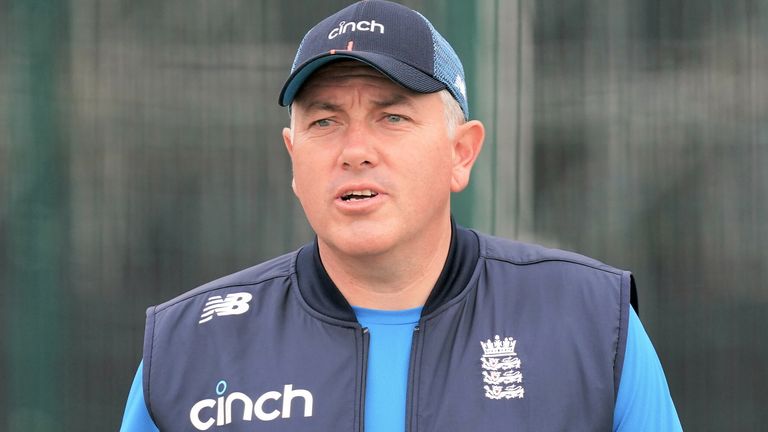
Silverwood coached England to a series win in Sri Lanka but results then rapidly went downhill
Beforehand, the head coach was forced to defend a controversial rest and rotation policy which meant Root would arguably be unable to field his strongest XI at any stage during the four-match series.
“I stand by it,” Silverwood said. “We’ve got to look after our people. We’re spending a lot of time locked in hotel rooms inside bio-secure bubbles and it’s not easy. It’s good that we’re being proactive and looking after people. I’m perfectly happy with the system.”
The captain seemed entirely unfazed by that as he put on another batting masterclass, making 218 to set up a famous England win in Chennai that also saw Anderson send down one of the great overs of reverse-swing bowling, taking two wickets in two balls, on the last day.
It was a memorable and crushing win but that was as good as it got. Perhaps the pinnacle of Silverwood’s time at the helm, but it preceded a steep fall.
Having piled on 578 in the first innings of the India series, they passed 200 just once more in seven attempts, scraping to 205 in Ahmedabad as they crashed to a 3-1 defeat.
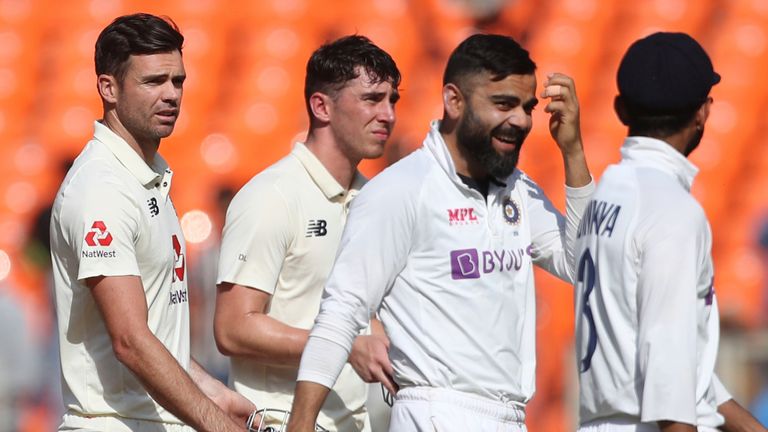
England won the first Test in India in early 2021 – but were then heavily beaten in the following three
Jack Leach bowled well on pitches that, to put it mildly, favoured spin, but India’s spinners bowled better in conditions to which they were accustomed while a rotating cast of England batters struggled to put up any sort of prolonged resistance.
Then there was the decision to play four seamers in the day-night Test in Ahmedabad. The idea was to bring England’s strength – seam and swing bowling – into play under the lights. Instead, 28 of the 30 wickets in the match fell to spin and India, who had gone in with three spinners, won by 10 wickets inside two days.
“When you’re heading somewhere, there is always going to be a few bumps in the road,” Silverwood told reporters at the end of the tour.
“We’ve got some very fine young players – Crawley, Sibley, Pope, Lawrence who has come in – and seeing these conditions, playing in different parts of the world, will, in the long run, do them a world of good.”
Silverwood takes on selection responsibility
In the weeks that followed the capitulation in India, managing director of England men’s cricket Ashley Giles made a significant change. National selector Ed Smith was out, his role abolished, and Silverwood added the task of selecting the squad to his previous duties.
The simplified structure gave Silverwood more power but, in a year in which England had aspirations of adding the T20 World Cup to their 50-over crown before bidding to regain The Ashes in Australia, he was also assuming all responsibility.
Many pundits viewed it as a mistake at the time and, nine months later and with just one win 11 Tests since Smith was axed, Giles’ call appears to have gone a long way to costing him his job. The managing director’s departure from the ECB confirmed on February 2.
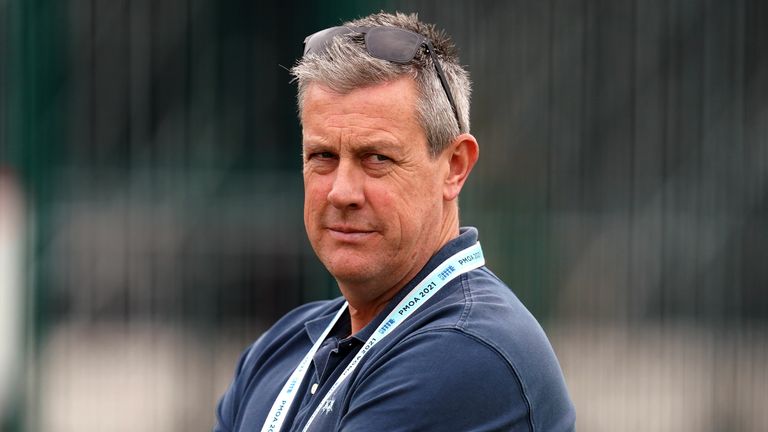
Nasser Hussain says he has sympathy with Ashley Giles following his sacking as England managing director, but believes he got some key decisions wrong
Silverwood’s exit, a day later, followed, and English cricket seemingly finds itself in the same position as when the now-axed head coach started, only with two of its greatest fast bowlers a couple of years closer to retirement.
With their well-rested IPL stars unavailable, England were a clear second best against New Zealand as their seven-year unbeaten record in home Test series came to an end following a comprehensive defeat at Edgbaston.
Perhaps more damning though was the draw in the first Test at Lord’s in which England did not even countenance going for the win after being set 273 for victory in 75 overs on the last day, such was their lack of confidence in the batting line-up.
The optimism of what Sibley, Crawley and Pope could bring in early 2020 had seemingly vanished and by the third Test against India later in the summer so had all three of them – Crawley and Sibley dropped with Pope out injured.

Jofra Archer’s elbow problem left England without a key player
“We want to travel to Australia, fitter, faster, leaner, more ready than ever before,” Silverwood had said ahead of the New Zealand series. “And [so] they get off the plane and it is ‘right, we’re here, we mean business and we’re full of confidence’, and that will take us through.”
A combined seven Tests against the top two sides in the rankings were supposed to prepare England to do that, but they only served to expose their frailties.
The ‘faster’ element was dealt two huge blows as Archer and Olly Stone were ruled out for the rest of the year with injury. The plan had been to hit Australia with pace but with two of their three 90mph-plus bowlers missing, a rethink was going to be required.
The emergence of Ollie Robinson gave them another seam option – and a good one at that – but the Sussex bowler slotted in alongside Anderson, Broad, Woakes and Craig Overton as right-armers in the 80-85mph range.
On the batting side, even the brilliance of Root could not make up for the shortcomings elsewhere as twice England collapsed on the last day of matches, folding when the pressure was on, as India bulldozed their way to victories at Lord’s and The Oval.
Losing Stokes, who was taking an indefinite break from cricket to focus on his mental health, did not help of course, but with no guarantee when the star all-rounder would be back, or if he would return at all, the batting remained a huge worry.
The Ashes debacle
After successful talks between the ECB, Cricket Australia, the England players and the Australian authorities over quarantine conditions, the tourists arrived Down Under with their strongest available squad.
The presence of Stokes was a welcome boost and Silverwood was confident that a “well-balanced” group could achieve something special.

Giles’ mistake was to get rid of Smith as the national selector and just put everything on Silverwood, all selection decisions, everything. That meant there was no outside noise at all coming in just questioning the odd decision here and there. It just looked as if they needed somebody from the outside knocking on the door and questioning them.
Sky Sports Cricket’s Nasser Hussain
However, even before a ball was bowled, England’s problems started. The squad was unable to train together with those involved at the T20 World Cup, where they suffered a semi-final defeat, arriving in Australia later than the red-ball specialists and having to quarantine.
Covid-19 restrictions also meant warm-up matches against local sides would not be possible but, as it transpired, it would have made little difference if that had been possible with the intra-squad games arranged in their stead being decimated by rain.
So it was then that an England side that had spent nearly two years trying to do everything in their power to be the most prepared team ever to visit Australia, arrived at The Gabba more undercooked than any that had come before them.
Perhaps the only saving grace was that Australia had not fared much better in their preparations, the T20 World Cup and the rain had affected them too and they had also had to install a new captain in place of Tim Paine just weeks before the first Test after a sexting scandal.
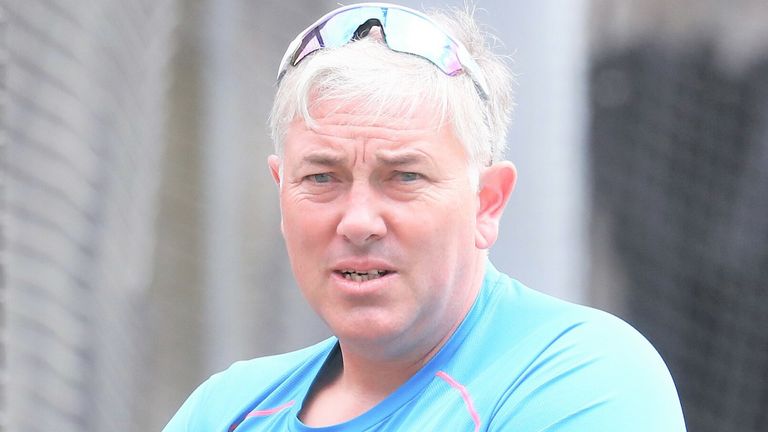
When Silverwood, after those first two Ashes Tests, still says ‘I think we picked the right side’, that is just nonsense. We need an honest appraisal of where we are as a red-ball cricketing side at the moment.
Sky Sports Cricket’s Nasser Hussain
Still, England offered them a helping hand as Root elected to bat first on a green-top in Brisbane and left out both Broad and Anderson. The latter was recovering from a slight niggle, but Broad’s omission was tactical, a continuation of the rest and rotation policy to keep him fresh for the Tests to come.
Mitchell Starc bowled Burns with the first ball of the series, England were 147 all out and, after 12 days of cricket, Australia were celebrating retaining the urn and winning the series.
England’s selection remained bewildering with Wood rested for the second Test on the flattest pitch of the series, just when his express pace would have been most useful. “Rested for what? We’re 2-0 down,” asked Michael Atherton as the game was lost and the series all but over.
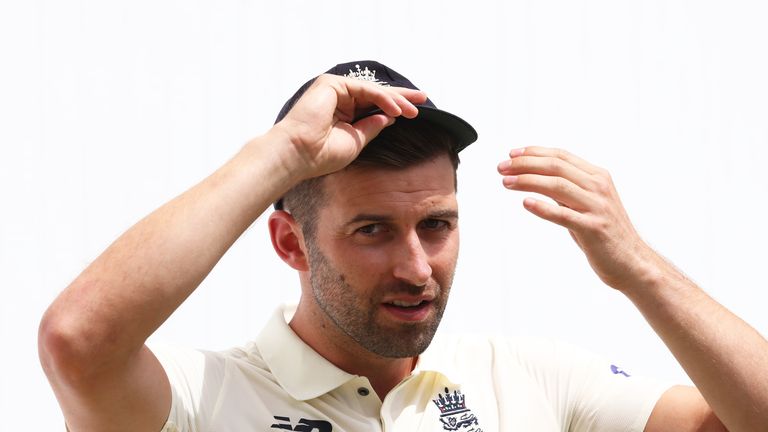
There was consternation among the pundits when England left Mark Wood out of the second Ashes Test in Adelaide
Leach, too, missed that day-night game in Adelaide as England ignored the groundsman’s claims before the match that the pitch would take spin. It did and Root ended up bowling 20 overs of part-time off-spin in the first innings as the visitors’ four right-arm 80-85mph seamers – five including Stokes – toiled.
Batting collapse followed batting collapse and of the players Silverwood and his team had invested so much time in, in no small part with this series in mind, Sibley did not even make the squad and Pope was dropped after two Tests, and only returned for the last due to injuries and averaged 11.16.
Meanwhile, Crawley was left out of the first two games after averaging a mere 11 in Test cricket since his double hundred. He did show some promise with an enterprising 77 in Sydney and finished third in the England averages, although he did so at 27.66 which only serves to highlight the general lack of runs in the side.
Holding on for a draw in Sydney saved England the ignominy of a 5-0 defeat but this series was as poor a showing, if not poorer, than either of the Ashes whitewashes suffered this century.
England simply did not compete as they repeated the mistakes of previous tours and added a few new ones for good measure. That Silverwood insisted he would make the same selections again just added to the sense that the strategy and decision-making had become increasingly muddled.

You can’t hold Joe Root or Chris Silverwood accountable for the structure of English cricket. You hold them accountable for the team right in front of them. Are they making that team better? Are they galvanising that team? Is that team better than the sum of its parts? Anybody who has watched this series cannot say that and that’s what you have to hold them accountable for.
Sky Sports Cricket’s Michael Atherton
“In interviews, with decisions and everything that has happened, Silverwood looks so out of his depth,” Rob Key told the Sky Sports Cricket Podcast.
“The captain, Joe Root, needed help, was crying out for help, and I don’t think Silverwood has been that man at any stage.”
Former England captain Nasser Hussain added: “When you take on that role as head selector and the accountability stops at your door, you had better make sure you win games and make good decisions. Some of the decisions have been shocking.”
Ultimately, England lost a record-equalling nine Test matches in 2021 and have started 2022 with another, narrowly avoiding a second.
Blame has been apportioned far and wide in recent weeks with county cricket, pitches and development coaching being put alongside the decisions of the coach and captain.
But with results getting worse and young players stagnating or even regressing during the two years under his leadership, the ECB has decided that Silverwood’s time is up.
There have been some unforgettable wins and he has battled in the face of the most challenging circumstances, but Silverwood leaves behind an inconsistent side with a fragile batting line-up and a bowling attack that struggled to replicate its potency on English soil, away from home.
England are back where they started.

